BRONZE AGE BONANZA completes another year with the best of the best…
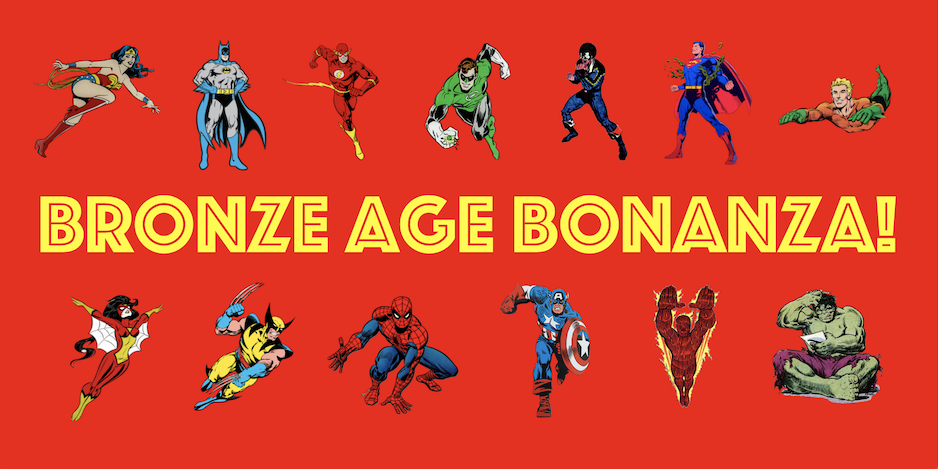
—
Welcome to BRONZE AGE BONANZA — our monthly series that looks at the greatest covers of the Bronze Age — exactly 50 years later. For more info on this feature, click here.
—
The year is almost over and we’ve completed all 12 regular installments of this year’s BRONZE AGE BONANZA.
What does that mean? It means we’re ready to rank the TOP 13 COVERS OF 1971!
Here’s how this would typically work: We’d take the top picks of each month, plus a second-place wild card and rank them overall.
Thing is, looking at 1971 as a whole, there was often a real division between great months and good months. So there are plenty of No. 2 picks that I would place above other months’ top selections. This year, then, I’ve expanded the wild-card pool to give a better representation of the year overall.
Here are the three No. 1s that didn’t make the final cut: May’s Lois Lane #111, by Dick Giordano; September’s Daredevil #82 by Gil Kane and Frank Giacoia; and December’s Superboy #182 by Nick Cardy. All are terrific – Superboy #182 is a personal favorite – but I think you’ll agree that the No. 2 wild-cards that are replacing them deserve to be here instead.
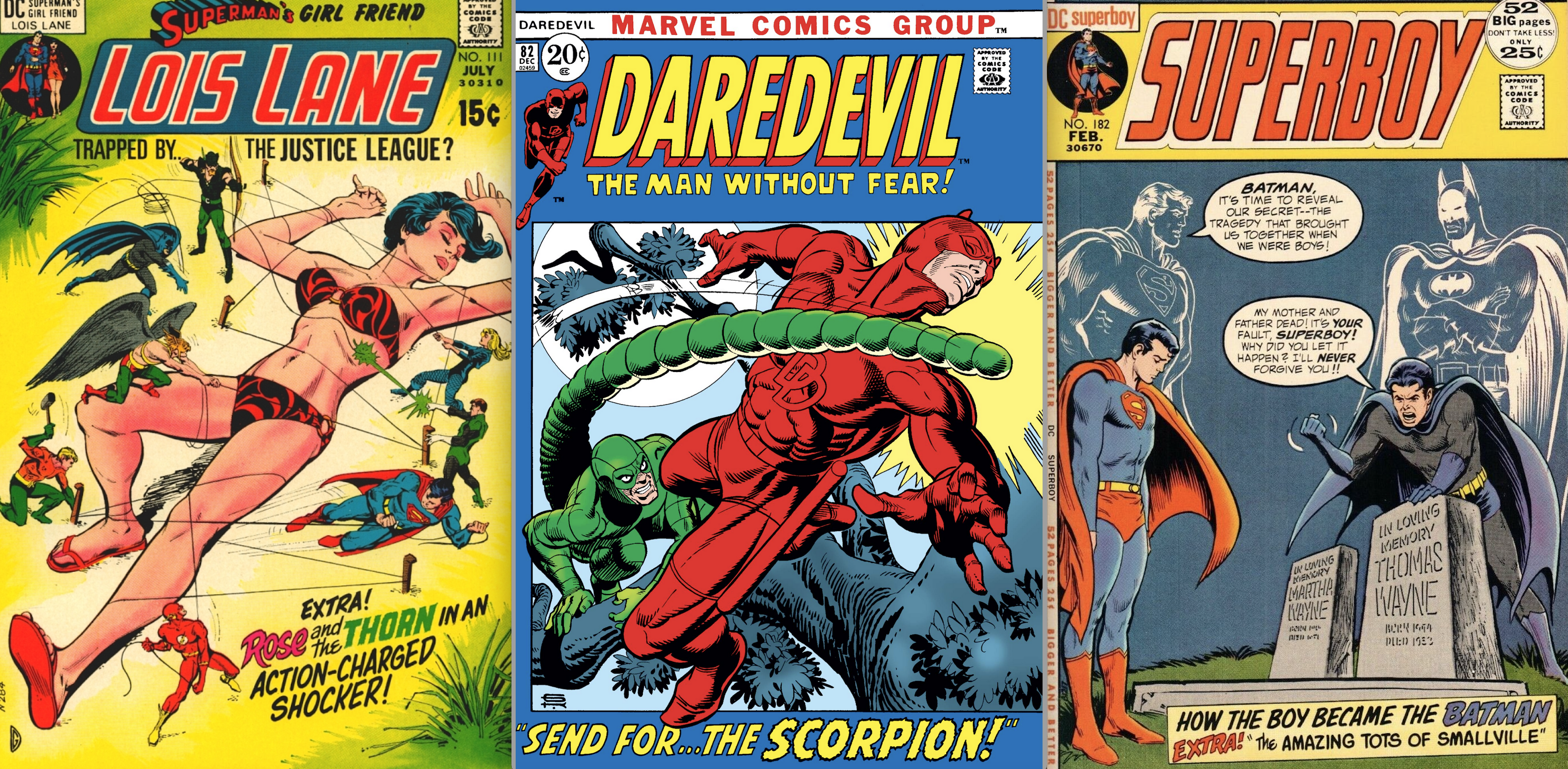
Or maybe not – leave a comment below!
In any event, here are THE TOP 13 COVERS of 1971 – RANKED. (And if you want to compare this list to THE TOP 13 COVERS OF 1970 – RANKED, click here.)
—
13. Savage Tales #1, Marvel (Winner, Jan. 1971). If you have an opportunity to include a John Buscema painting of Conan the Barbarian, you’re gonna take it. No question.
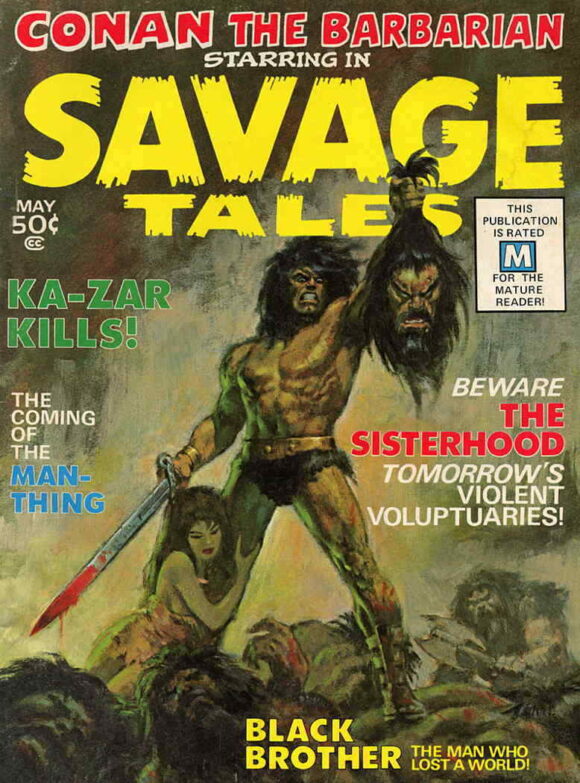
John Buscema
—
12. DC 100-Page Super Spectacular #6, DC (Winner, July 1971). A Neal Adams classic – but then you’ll see that there are A LOT of Neal Adams classics on this list; the artist was at his mightiest. The reasons it’s so low on this list are two-fold: As cool as it is to see Adams’ versions of so many characters – Earth-One and Earth-Two – it’s a static image and it’s an homage cover (All-Star Comics #16). Fab yes, but there’s so much more to come.
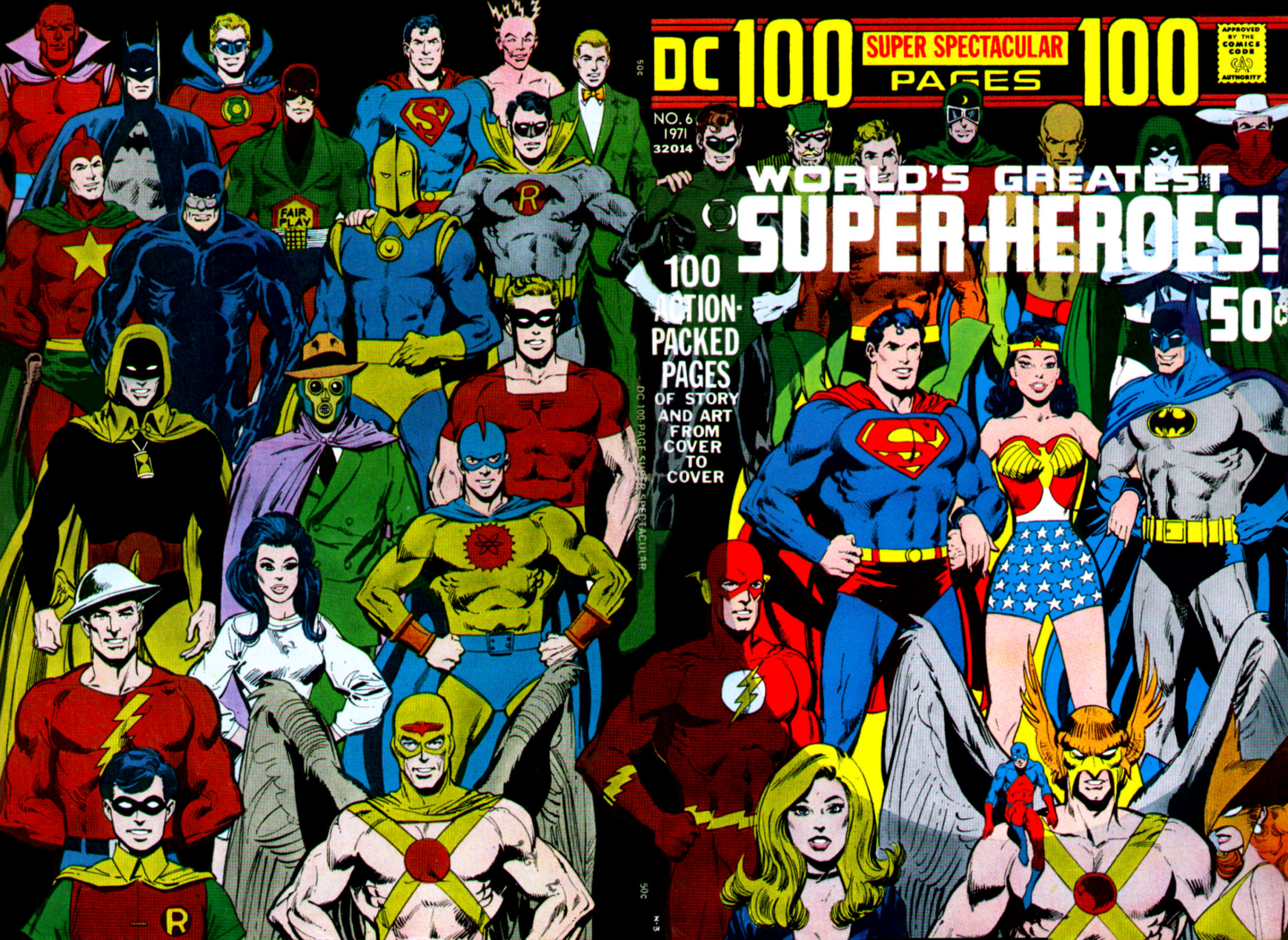
Neal Adams
—
11. The Forever People #2, DC (Winner, Feb. 1971). Kirby gets his collage on! The cover is busy to be sure, but it is a prime example of Kirby unleashed in the Fourth World.
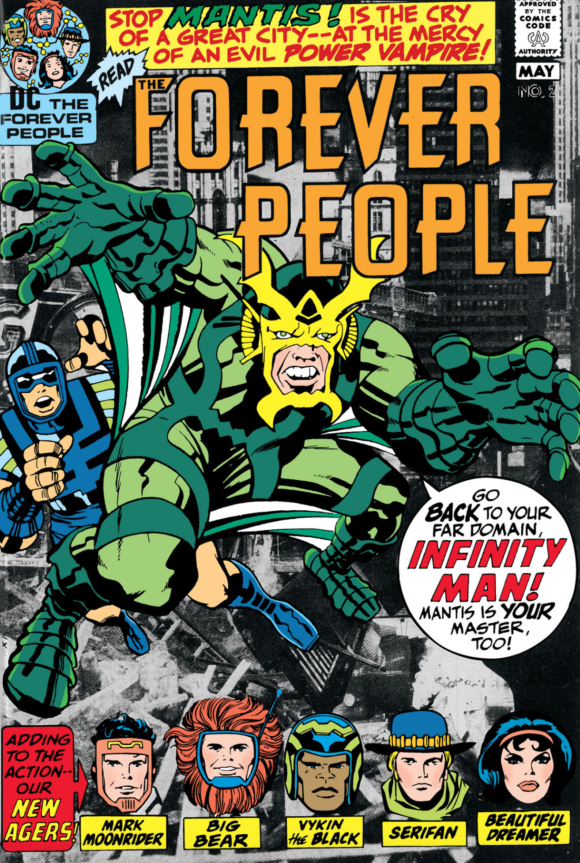
Jack Kirby pencils, Vince Colletta inks
—
10. Mister Miracle #2, DC, (Winner, March 1971). There are better-known Mister Miracle covers but this beats them all because there is no possible way Scott Free will be able to avoid those three gigantic blades. Except that you know he will – it’s just a matter of how.
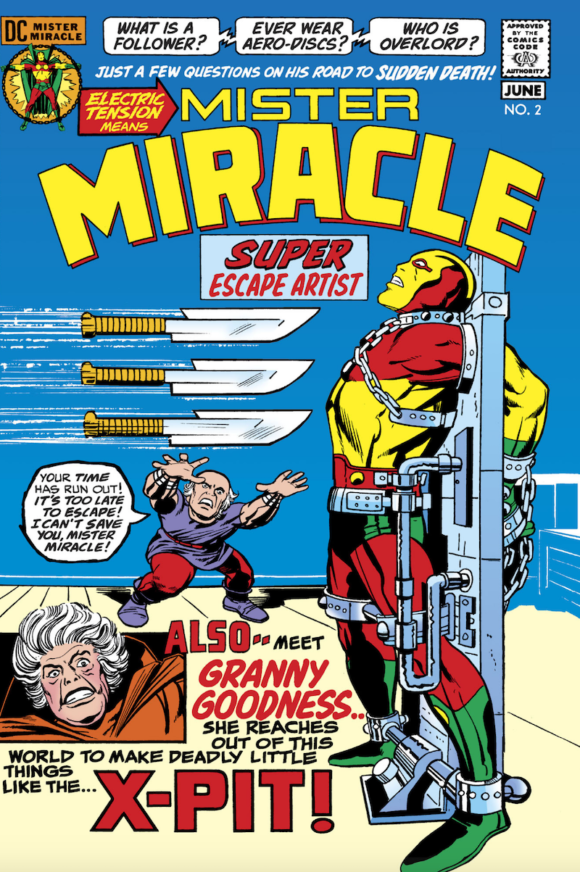
Kirby and Colletta
—
9. The Avengers #93, Marvel (No. 2, Aug. 1971). Get ready for a ton of Neal Adams, folks. This one is only one of the most famous Avengers covers ever.
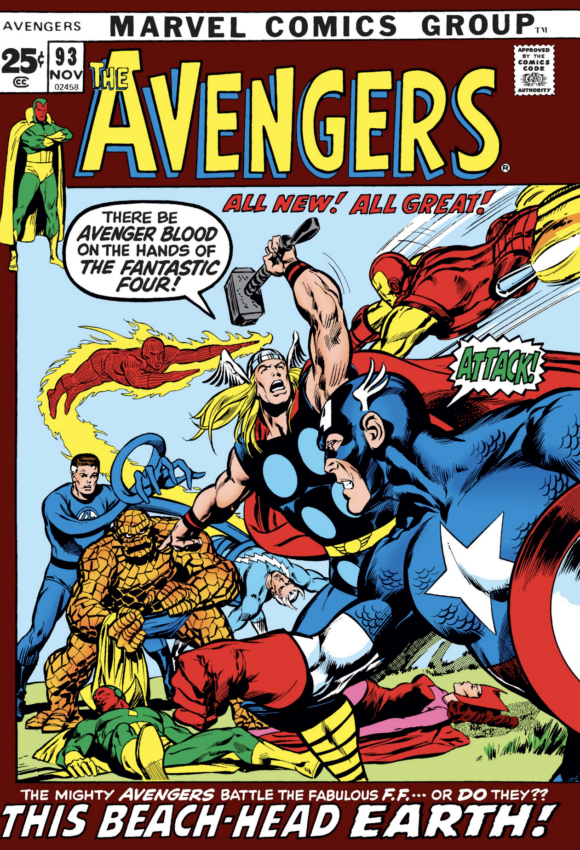
Adams pencils, Tom Palmer inks, Marie Severin alterations
—
8. The Avengers #96, Marvel (Winner, Nov. 1971). This is also only one of the most famous Avengers covers ever – with an edge toward Vision’s unexpected savagery.
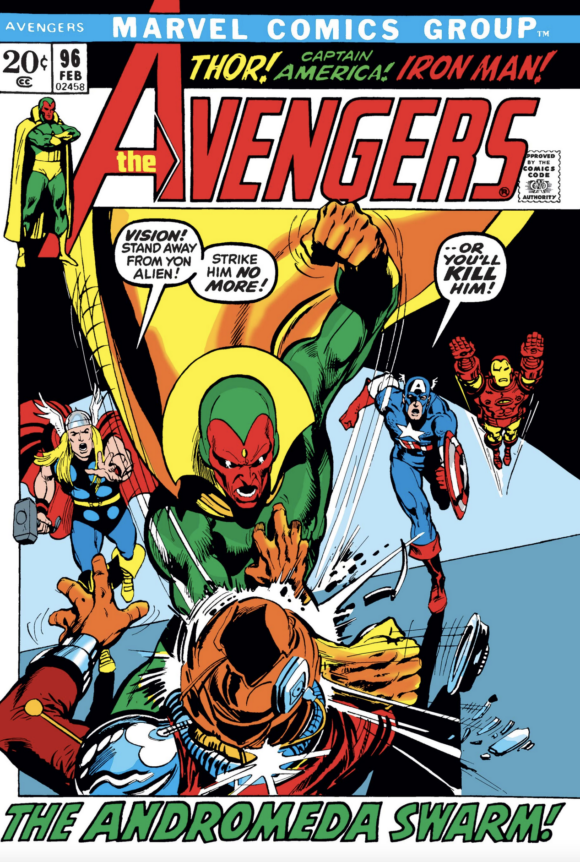
Adams pencils, possible Palmer inks
—
7. Batman #237, DC (No. 2, Oct. 1971). More Adams. I’ve written so much about this issue – the greatest Halloween comics story ever – that I don’t have much more to say except that this spectacular cover more than lives up to what’s inside. Legitimately terrifying.
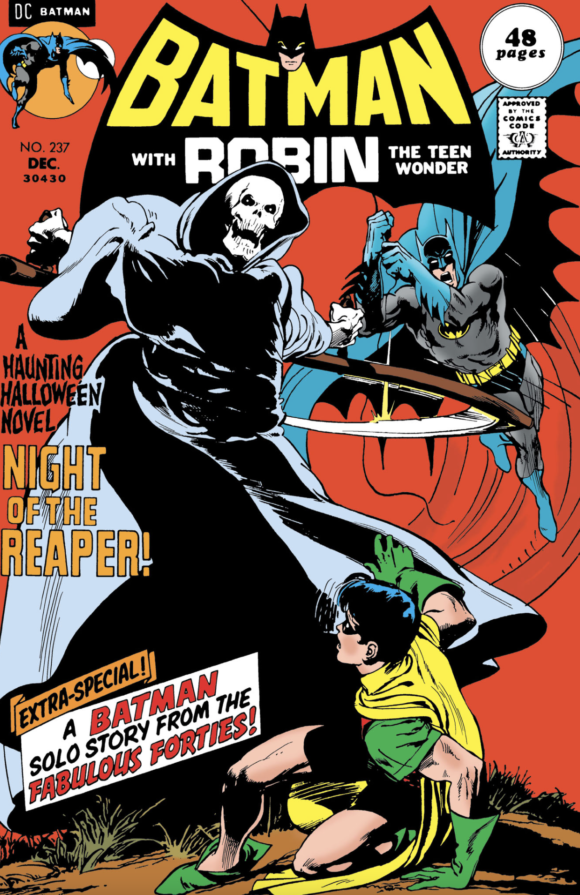
Adams
—
6. Green Lantern #86, DC (Winner, Aug. 1971). The second drug issue doesn’t quite capture the drama of the first but it’s a powerful image nonetheless, between Green Arrow’s anguish, Green Lantern’s rage – and the not-at-all-subtle message that this is a profound problem that affects millions of real people, not just superheroes in a story.
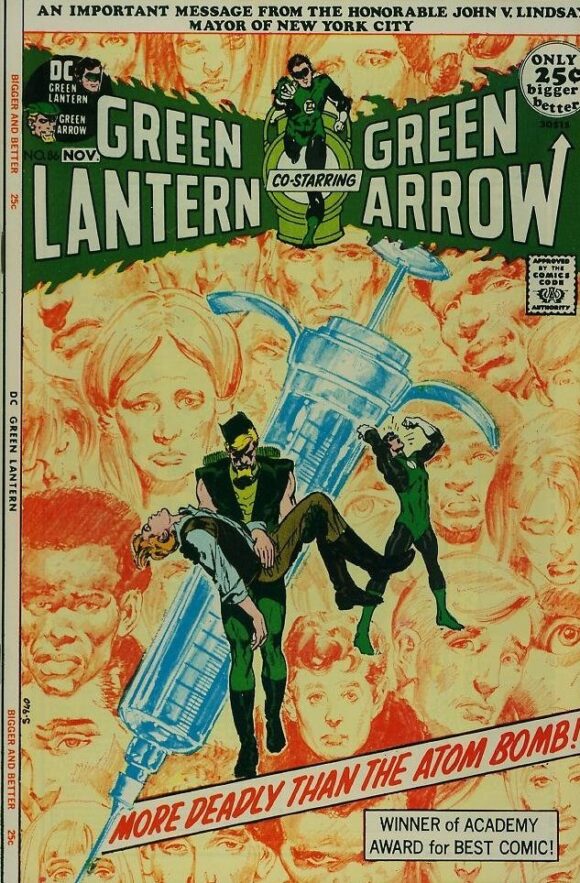
Adams
—
5. House of Secrets #92, DC. (No. 2, April 1971). A gorgeous cover by Bernie Wrightson introducing one of comics’ most beloved monsters. What else is there to say?
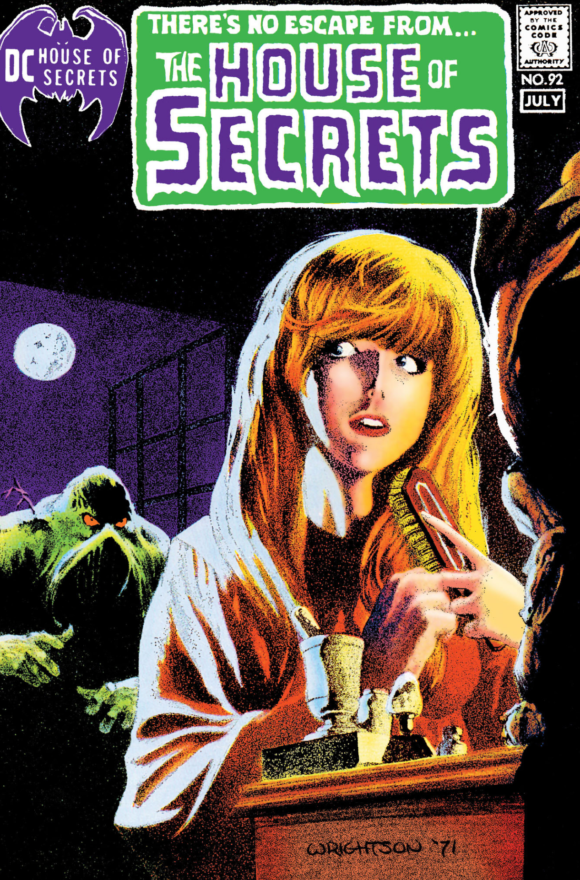
Bernie Wrightson
—
4. Batman #232, DC (Winner, April 1971). This Adams cover introducing Ra’s al Ghul is one of the greatest Batman covers of all time, which is saying something. (It’s also saying something that it only comes in at No. 4 on this list. But you’ll see.) Adams uses all his visual sorcery to conjure an ominous image for the ages. You can argue House of Secrets #92 has more historic impact (though it’s close) but I give the edge to Adams’ magic.
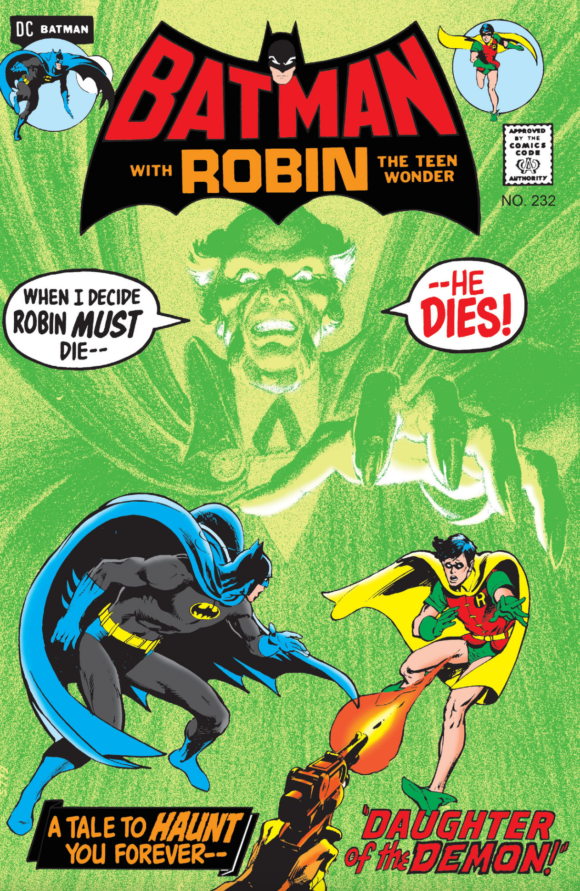
Adams
—
3. The Amazing Spider-Man #100, Marvel (No. 2, June 1971). Iconic is an overused word. Most people use it to mean “great” or “popular” but this is the definition of an iconic comics cover: Spidey all bright red and blue in a classic pose, set against a black background boasting the negative images of his friends and foes alike. One of the greatest comics covers I’ve ever seen. John Romita and Frank Giacoia could have hung their entire careers on this.
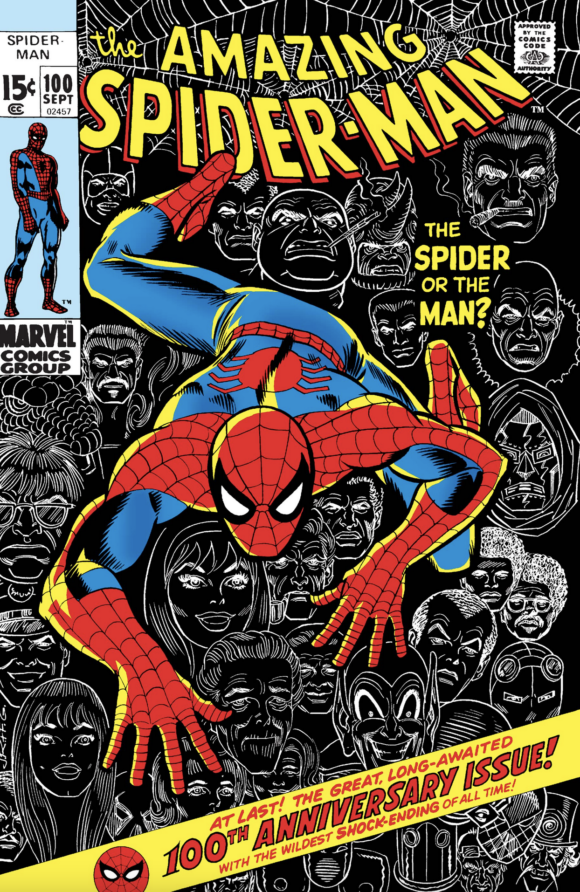
John Romita pencils, Frank Giacoia inks
—
2. Green Lantern #87, DC. (Winner, Oct. 1971). I told you Neal Adams was going to steal this show. The blank white background is one of comics’ smartest design choices because it puts the focus 100 percent on the stunning image of a Black man as Green Lantern. John Stewart would go on to become beloved by millions of fans but amid the social upheaval of the late ’60s and early ’70s, this was a startling landmark.
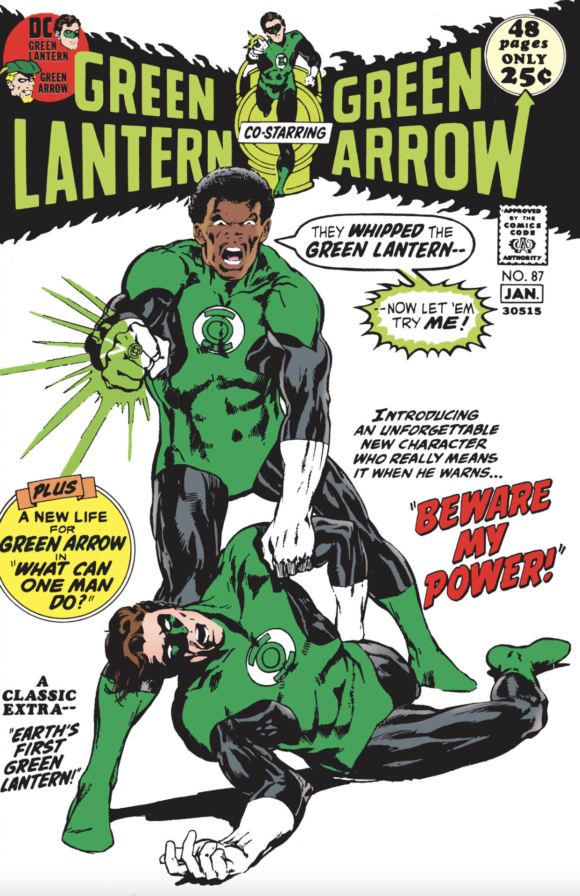
Adams
—
1. Green Lantern #85, DC (Winner, June 1971). You knew where this was headed, didn’t you? Everything about this epochal Adams cover speaks for itself – and raises the stakes as high as any comic ever had or likely ever would.
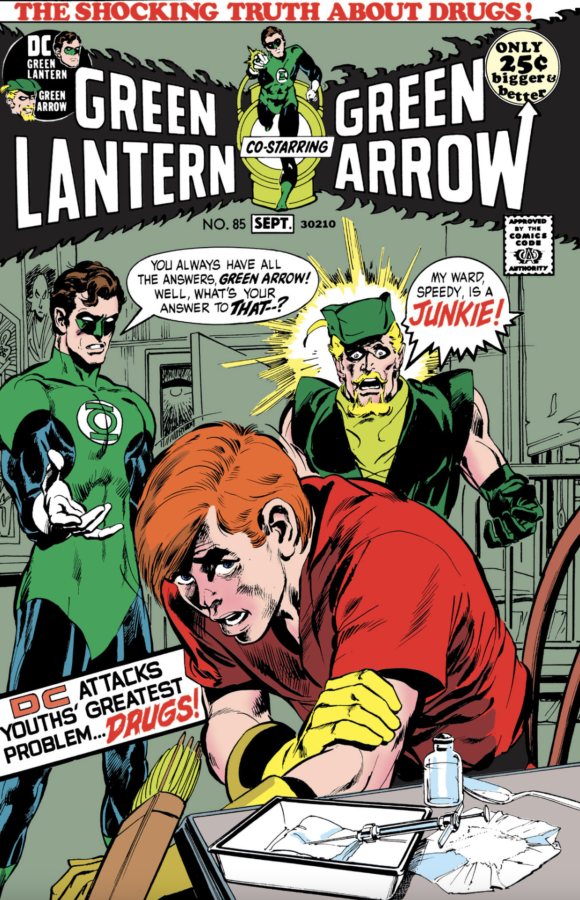
Adams
—
MORE
— BRONZE AGE BONANZA: The 1971 INDEX. Click here.
— BRONZE AGE BONANZA: The 1970 INDEX. Click here.

December 26, 2021
Interestingly, of all the Amazing Spider-Man covers from that era, #100 is my least favorite. It’s good, but 101, for example, is great – an all time great that I would probably put at #1 for the whole year.
December 27, 2021
I stopped buying DCs when they went from 15¢ to 25¢. Using the CPI, a quarter in 1971 equals about $1.69 today. If only current comics were $1.69. And if only current comics were as entertaining as the ones in 1971.
December 27, 2021
1971 was the true Golden Age of comics. 1969-1975 or so. The art was phenomenal, and the stories actually said something. The stories had adult themes and were written for older teenagers and young adults – but in a way that kids could easily enjoy them (meaning nothing inappropriate for kids 10 and older). That’s how comics SHOULD be written! I read those comics now and am surprised by how well the stories hold up for adults today. I started buying comics in 1974, and just got in on the tail end of that era. There were still some great comics in the late 70’s and early 80’s, but the style changed. Marvel, especially, had their major titles become slightly more generic in style (the stories were simpler and less sophisticated, as was the characterization). But at the same time you had The Uncanny X-Men taking off, Iron Man becoming very adult, and then Byrne took over the FF in the early 80’s with great results.
Still, nothing beats that ’69-’75 era. It was so consistently good, and very often great.
December 27, 2021
Why are there no prices on most of the DC comics?
December 27, 2021
A number of the scans are from DC’s online selection because they are the cleanest available. They remove the prices from online copies, for whatever reason.
July 23, 2025
My favorite:
https://www.marvel.com/comics/issue/12909/fantastic_four_1961_112